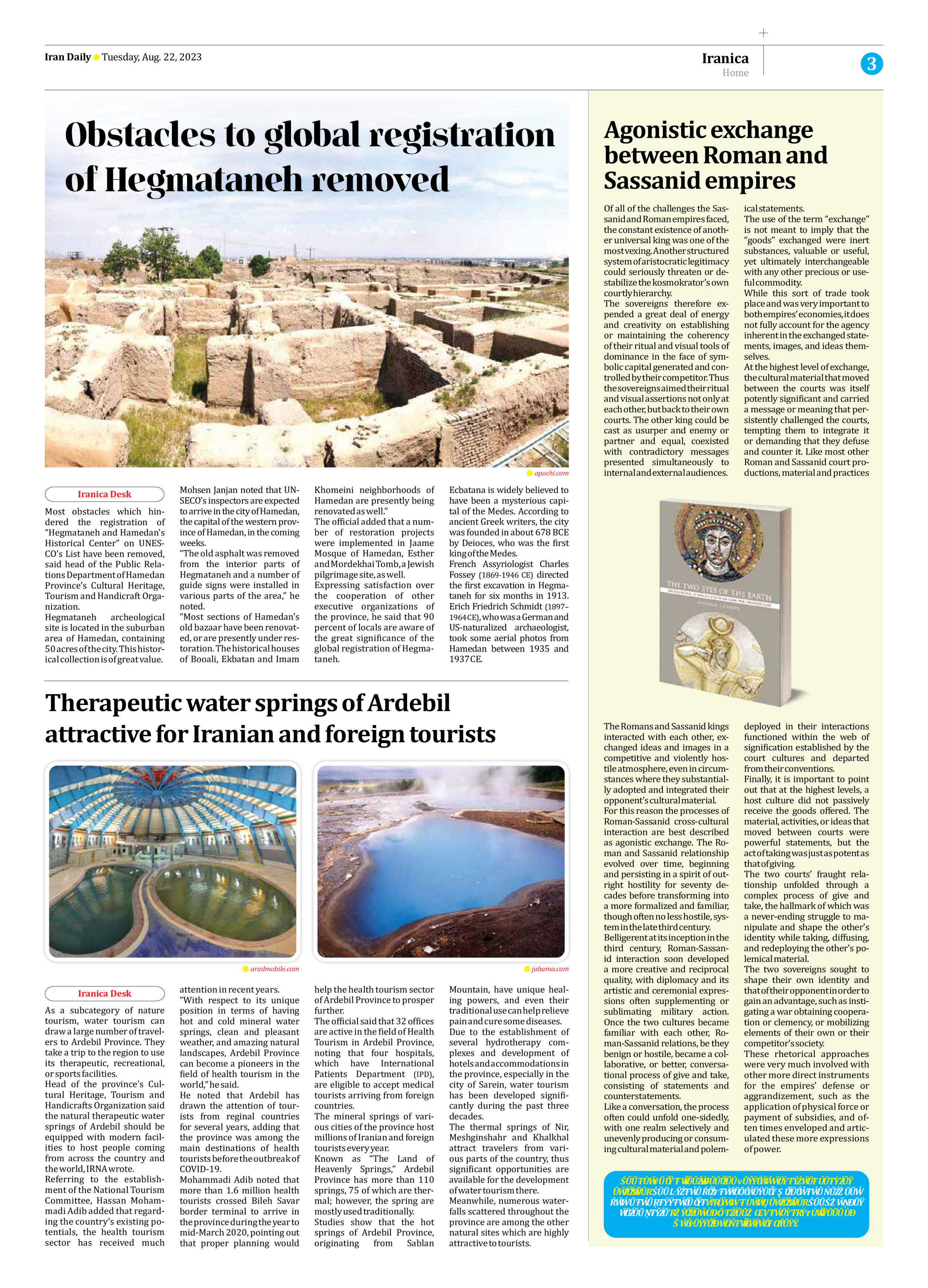
Agonistic exchange between Roman and Sassanid empires
Of all of the challenges the Sassanid and Roman empires faced, the constant existence of another universal king was one of the most vexing. Another structured system of aristocratic legitimacy could seriously threaten or destabilize the kosmokrator’s own courtly hierarchy.
The sovereigns therefore expended a great deal of energy and creativity on establishing or maintaining the coherency of their ritual and visual tools of dominance in the face of symbolic capital generated and controlled by their competitor. Thus the sovereigns aimed their ritual and visual assertions not only at each other, but back to their own courts. The other king could be cast as usurper and enemy or partner and equal, coexisted with contradictory messages presented simultaneously to internal and external audiences.
The Romans and Sassanid kings interacted with each other, exchanged ideas and images in a competitive and violently hostile atmosphere, even in circumstances where they substantially adopted and integrated their opponent’s cultural material.
For this reason the processes of Roman-Sassanid cross-cultural interaction are best described as agonistic exchange. The Roman and Sassanid relationship evolved over time, beginning and persisting in a spirit of outright hostility for seventy decades before transforming into a more formalized and familiar, though often no less hostile, system in the late third century.
Belligerent at its inception in the third century, Roman-Sassanid interaction soon developed a more creative and reciprocal quality, with diplomacy and its artistic and ceremonial expressions often supplementing or sublimating military action. Once the two cultures became familiar with each other, Roman-Sassanid relations, be they benign or hostile, became a collaborative, or better, conversational process of give and take, consisting of statements and counterstatements.
Like a conversation, the process often could unfold one-sidedly, with one realm selectively and unevenly producing or consuming cultural material and polemical statements.
The use of the term “exchange” is not meant to imply that the “goods” exchanged were inert substances, valuable or useful, yet ultimately interchangeable with any other precious or useful commodity.
While this sort of trade took place and was very important to both empires’ economies, it does not fully account for the agency inherent in the exchanged statements, images, and ideas themselves.
At the highest level of exchange, the cultural material that moved between the courts was itself potently significant and carried a message or meaning that persistently challenged the courts, tempting them to integrate it or demanding that they defuse and counter it. Like most other Roman and Sassanid court productions, material and practices deployed in their interactions functioned within the web of signification established by the court cultures and departed from their conventions.
Finally, it is important to point out that at the highest levels, a host culture did not passively receive the goods offered. The material, activities, or ideas that moved between courts were powerful statements, but the act of taking was just as potent as that of giving.
The two courts’ fraught relationship unfolded through a complex process of give and take, the hallmark of which was a never-ending struggle to manipulate and shape the other’s identity while taking, diffusing, and redeploying the other’s polemical material.
The two sovereigns sought to shape their own identity and that of their opponent in order to gain an advantage, such as instigating a war obtaining cooperation or clemency, or mobilizing elements of their own or their competitor’s society.
These rhetorical approaches were very much involved with other more direct instruments for the empires’ defense or aggrandizement, such as the application of physical force or payment of subsidies, and often times enveloped and articulated these more expressions of power.
The above is a lightly edited version of part of a chapter entitled, ‘The Art and Ritual of Kingship Within and Between Rome and Sassanid Iran’, from a book entitled, ‘The Two Eyes of the Earth’, written by Matthew P. Vanepa, published by University of California Press.







